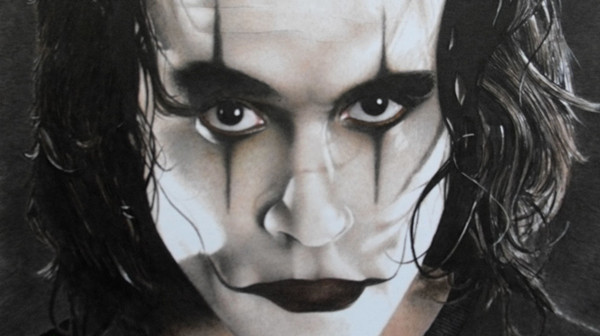
It appears that extensive reshoots have become par for the course for major studio films and rarely the true sign of a doomed project, yet with each new trade report announcing the commencement of additional filming, it has continued to spark worry of potential disaster for the film in question.
Those anticipating Rogue One to be the downfall for the Star Wars franchise when major rework was done to the film’s final act and unconfirmed reports of director Tony Gilroy stepping in for the solely credited Gareth Edwards during these reshoots were quickly relieved when the film was released to positive reviews and wound up raking in just over $1 billion worldwide.
However, the same success cannot be attributed to the similarly heavily reconfigured Solo film which was released to a lukewarm reception and especially tepid box office results for a brand this huge. Even the all-time classic The Wizard of Oz endured a tumultuous production cycle with no less than five directors working on the film at one point or another, yet as soon as it was released to wide acclaim all issues were forgotten.
On the other hand, there are the instances where behind the scenes scuffles have rightly caused worry for a film’s final product, whether there be the cases of studio meddling, bad test screening scores, the often used but never explained creative differences between director and producers, or maybe the film is just too damn hard to make.
These factors haven’t necessarily resulted in these films being terrible (though there will be a couple entries in this list where that term applies) and a few instances where all the troubles were ultimately worth it when the film winds up being great. Nonetheless, the films discussed in this list are cases where the behind the scenes stories are often more interesting than the films themselves:
10. Fantastic 4 (2015, Josh Trank)
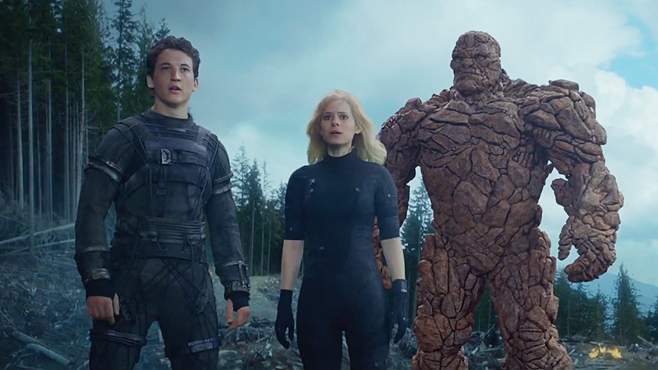
While other superhero films have had their fair share of hitches leading up to release such as the director switch-up and CGI moustache removal of Justice League or the tone altering reshoots of Suicide Squad, yet none of those compare to one of the most interesting examples of studio interference and clashes with an unproven director in this would-be superhero blockbuster.
To retain the valuable rights to Marvel’s first family, 20th Century Fox’s only option was to reboot the Fantastic Four after the previous attempt to launch a long-term franchise sputtered out after the second entry of director Tim Story’s not-so-loved adaptation.
The intention to make the film may not have been made purely out of the love for cinema, rather it was only to extend Fox’s ownership of characters like Reed Richards, Doctor Doom, etc., but the gathering of creatives for the project suggested a unique take on the property.
As was the case with Colin Trevorrow, Jordan Vogt Roberts and numerous other breakout indie directors, a trend has been for studios to hire these fledglings to direct $100m plus productions for their second features, and for Fox, they hired Josh Trank, a promising young filmmaker hot off the success of found-footage superhero movie, Chronicle.
The film that both the studio and Trank both agreed to make before the cameras started rolling was a darker, grounded-in-reality and a more science-fiction body-horror take on these well-known characters.
Fox, however, got cold feet during production at the notion of a Cronenberg inspired superhero blockbuster and demanded complete script rewrites and major change in tone. While studios have always had the final say in how their big budget blockbuster plays out with only the most distinguished directors being allowed final cut, it is rare, however, for the film that the studio greenlights to only be backtracked midway through that vision being fulfilled and unrecognisably altered in the editing room.
Unlike most other young directors with an unproven track record who will capitulate to studio demands, Trank went on the offensive. His on-set behaviour was said to have been ‘erratic’ and sometimes even hostile, and there was also the report of his dogs causing $100,000 worth of damage to the studio rented apartment he was staying in.
Reshoots were inevitably ordered and are obvious to spot when Kate Mara’s Sue Storm hair changes scene by scene with a bad wig for the reshoots. It unfortunately resulted in a complete tonal mess with Trank’s dark science fiction (a tone especially evident in the lengthy first act before the film entirely skips act two and goes straight into the cobbled together climax) and the studio’s family friendly quippy superhero yarn, with many of the more appealing moments featured in the trailer making no appearance in the final cut. Trank regrettably tweeted (and hastily deleted) out that ‘A year ago I had a fantastic version of this. And it would’ve received great reviews. You’ll probably never see it. That’s reality though.’
As consequence of this, Trank lost out on the chance to direct a Star Wars film after the film’s scathing reviews and dismal box office but the director will potentially make a return to public favour with the Tom Hardy starring crime film, Fonzo.
You’d think Fox would learn their lesson in how they handle their superhero properties, but trouble also seems to be looming on the horizon for Josh Boone’s New Mutants, a horror-focused entry in the X-Men franchise that was originally set for release in April 2018 (with a trailer already released when it was still targeting that date) only to be rescheduled for August 2019 due to extensive reshoots.
9. Island of Dr Moreau (1996, John Frankenheimer)
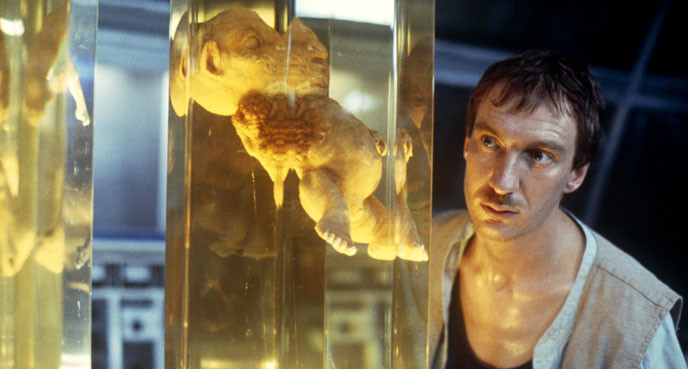
So disastrous a production it even has its own feature-length documentary detailing the madness that went down on what appears to have been a miserable experience for all, this adaptation of Island of Dr Moreau seemed doomed as soon as the cameras started rolling.
Cult director Richard Stanley was hired by the New Line Cinema to helm the third retelling of H.G Wells’ novel, a dream project for the filmmaker, and spent four years developing the film, a tale of a man washing up on a remote island populated by animal/human hybrids all created by nefarious scientist, Dr Moreau.
The process initially appeared to be running smoothly; Stanley had managed to line up a stellar cast including Bruce Willis as the lead protagonist; James Woods as Montgomery, Moreau’s assistant; and the legendary Marlon Brando as the title character.
Problems began to arise when Willis dropped out of the role, replaced by Val Kilmer who then demanded substantially less shooting days and his role was switched to Montgomery as a solution, forcing Woods to remove himself from the project. Brando’s daughter sadly committed suicide early on in filming, resulting in the actor becoming a recluse for a large period of time and Kilmer learning that his wife was suing him for divorce, which was said to have led to the actor experiencing a nervous breakdown of sorts and becoming increasingly difficult and antagonistic in his behaviour.
Tensions began to rise between New Line and Stanley so much so that the director was booted off the production three days into filming, a decision that Stanley did not take well as he completely disappeared for a time by living in the jungle near where filming took place, only to reappear in disguise as one of the animal hybrids and destroy part of the set near the end of shooting.
Grizzled director John Frankenheimer was hastily hired as Stanley’s replacement with a rewrite of the script commissioned, and filming was hoped to shortly get back on track, with David Thewlis now starring as the protagonist.
Kilmer continued to be difficult to work with and when Brando resurfaced from his mourning, he requested that his lines be fed to him through an earpiece and began making bizarre demands for his character, such as being inexplicably coated in white paint throughout and being constantly accompanied by a two-foot man in his scenes, playing some sort of clone (an aspect never explained in the film) of Moreau.
The film was ultimately a box office and critical bomb, serving as a major career setback for all involved with Stanley yet to direct another motion picture. Even more of these set troubles are told by Stanley himself in the excellent documentary, Lost Soul: The Doomed Journey of Richard Stanley’s Island of Dr Moreau, a film infinitely more engaging than the one it’s describing.
8. The Dark Tower (2017, Nikolaj Arcel)
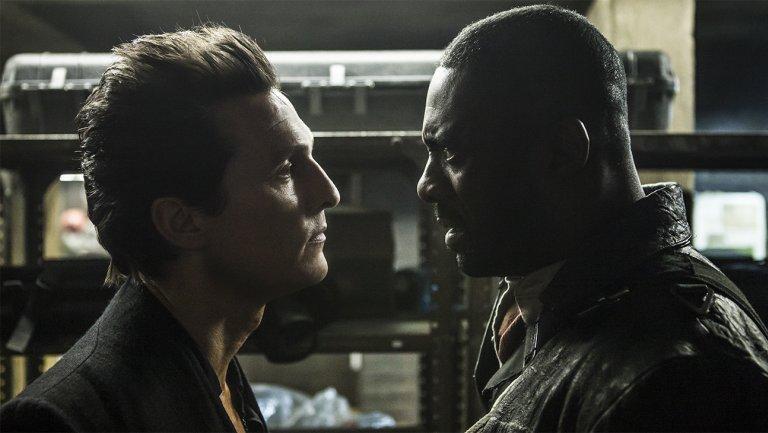
No way near the level of torture to film as some of the other entries on this list, rather it was the lengthy, expensive and arduous effort to actually get the film into active production only for the eventual product we got to be nowhere near worth the wait.
Languishing over a decade in development hell, JJ Abrams attempted to take the first swing at an adaptation of Stephen King’s self-proclaimed magnum opus, the Dark Tower series, a dark fantasy epic spanning eight books and thousands of pages.
Abrams spent three years from 2007 to 2009 attempting to crack the dense mythology and genre-mashing approach of King’s novel and transfer it to an accessible cinematic form. Abrams eventually gave up on the project and rights relapsed, only for Universal to quickly option them with a more ambitious intention; a trilogy of films and television series to run concurrently.
Ron Howard was hired to direct the first instalment, with Akiva Goldsman on scriptwriting duties and Javier Bardem announced for the lead role of The Gunslinger. Roland Deschain. Universal eventually passed on greenlighting the film in 2011 out of budget concerns, yet Howard and Goldsman remained onboard. The film then moved to Warner Bros. only for them to likewise dodge the greenlight.
Sony was the company to finally get the cogs turning for the film announcing in 2015 that they were giving the go-ahead with Nikolaj Arcel in the director’s chair, and Howard and Goldsman still involved in a producer’s capacity with the companion television series also announced.
Idris Elba was chosen to be the gunslinger (a casting that caused some unfair online backlash with Elba’s lack of resemblance to how Roland is described in King’s novels) and Matthew McConaughey cast as the Man in Black, Roland’s arch-nemesis.
When the film was test-screened, the feedback was poor, resulting in $6 million being spent on reshoots fleshing out Roland’s backstory and making its mythology and fantasy world easier to digest for the casual viewer.
For a series this rich in emotional, complex and epic-scale storytelling and character work, the final product felt completely watered down with a bare-bones 90-minute run time, a lack of reverence to the source material and the ill-advised decision to set the film largely in the real world as opposed to the western fantasy land of mid-world where the books are mainly set.
Ultimately, the film isn’t a complete train-wreck and functions as a perfectly watchable yet disposable fantasy, but the wasted potential here and the years of development makes the sting of what could have been that much worse. The TV series is still believed to be alive in some capacity, with it being announced that Amazon would be producing it for their streaming service, but otherwise it is unknown if it will be connected to the 2017 film or if it will actually see the light of day.
7. 47 Ronin (2013, Carl Rinsch)
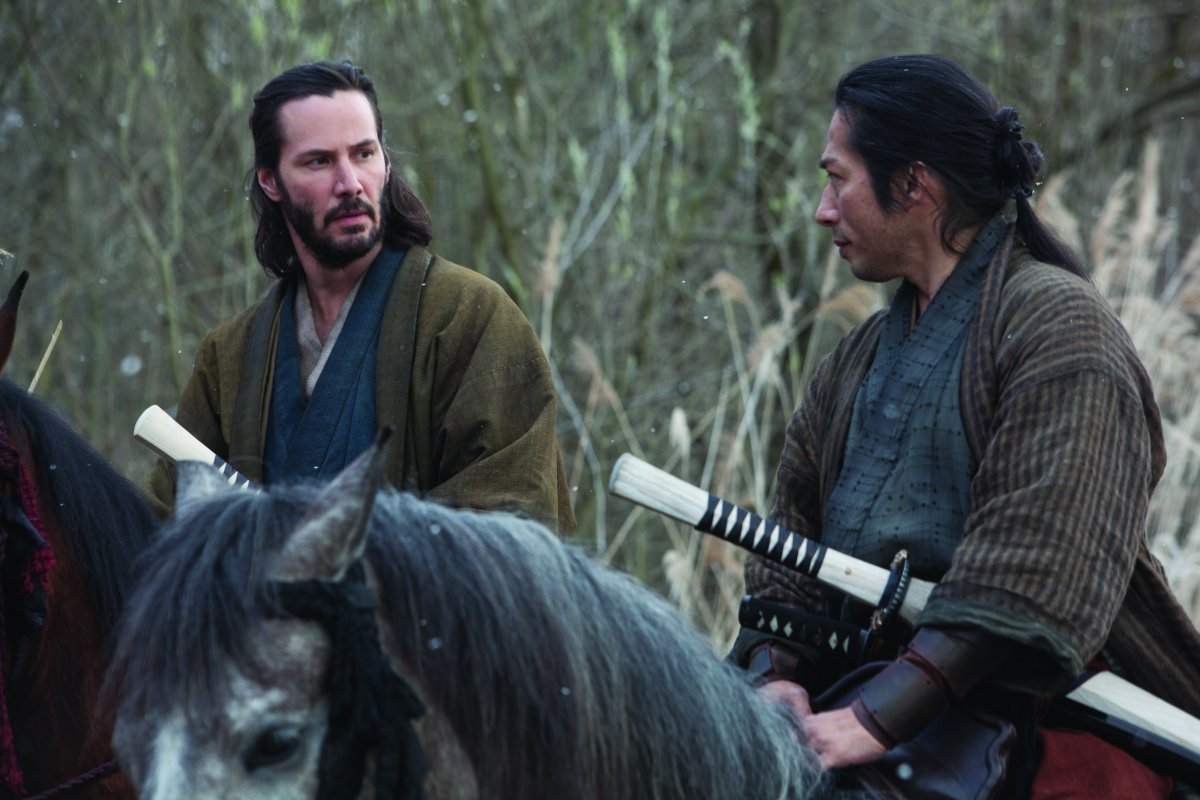
A further example of Hollywood providing young, untested directors with gargantuan budgets only for it to come back and bite them in the arse, as was the case with the Keanu Reeves fronted samurai fantasy epic, 47 Ronin. Greenlit in 2008 by Universal with an initial release set for 2011, only for it to face two substantial delays before finally settling on Christmas Day 2013.
Rinsch was hired for the film after an impressive pitch to executives despite having no feature film experience. The studio would later regret this decision when it was reported that Rinsch never secured a true vision for the story, with the main reason cited the issue of staying true to the tale’s Japanese roots while simultaneously seamlessly combining the fantasy spectacle designed for worldwide audiences.
After multiple rewrites and change in creative directions, the studio then made the decision to shoot in 3D after the phenomenal success of Avatar – an expensive option – which made the initial budget balloon to $175 million, an incredibly risky amount for a film that only featured one transnational star in Reeves surrounded by a completely Japanese cast. A budget this size meant that to become profitable, 47 Ronin would have to gross close to the amount of $500 million.
When the first cut was presented in 2011, Rinsch was also rumoured to have attempted to make a less commercial and more inspired by classic Japanese samurai cinema film that inevitably made the studio nervous and unsatisfied with how their expensive tentpole was turning out.
Costly decisions that the director was said to have made was having museum-quality level costumes, weapons and armour designed for characters and then initially filmed the Japanese actors talking in their native language first and then another take of them speaking English – for which many cast members had to learn phonetically.
The familiar sound of extensive reshoots was commissioned made to highlight Reeves as the main character (Japanese co-lead Hiroyuki Sanada was said to have a more significant role in the first cut) and to pump up the battle sequences.
Another setback was the studio’s decision to lock Rinsch out of the editing bay, effectively firing him from post-production with multiple editors coming in and out attempting to save the film, at which point the already bloated budget was rumoured to have grown to $225 million.
Even in the film’s trailers, you can see how the film changed throughout its almost endless post-production period with complete scenes and set-pieces shown in each trailer entirely omitted from the final product with a skull-tattooed character featuring prominently in marketing and even having his own poster, being left with mere seconds of screen-time. As was to be expected, the film was a major bomb with Universal losing hundreds of millions in terms of write downs and Rinsch yet to make another feature film.
6. The Exorcist (every theatrical entry in the franchise)
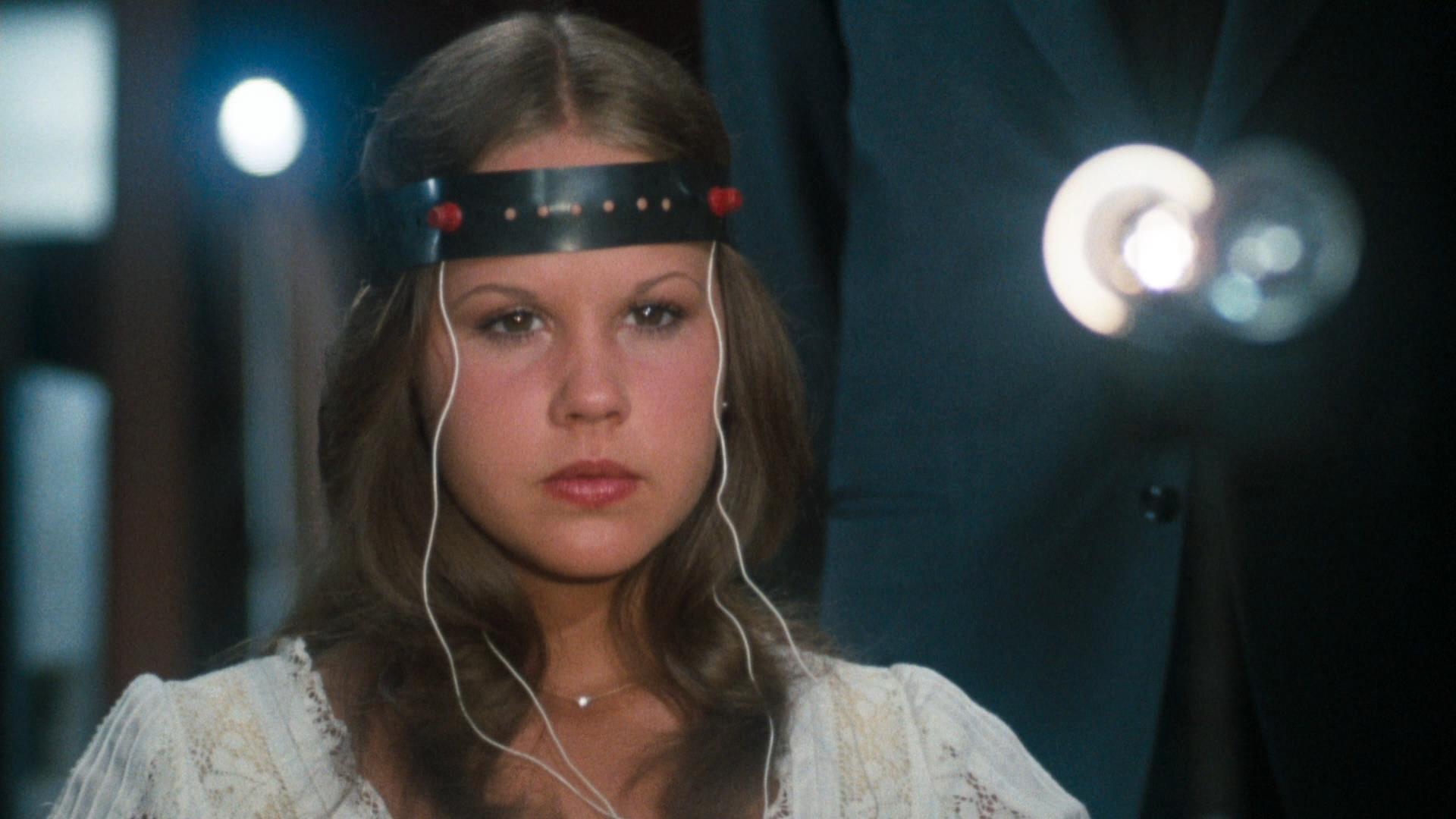
Possibly the most cursed franchise in cinematic history where each film in the series faced increasingly escalating problems before being brought to screen (and even afterwards) with varying degrees of success.
For director William Friedkin’s first entry in the controversial horror series, these difficulties appeared almost supernatural in nature as if they were occurring the wrath of the very thing they were depicting on film. There was a freak accident involving a bird and a circuit box which burned down the set of the MacNiel’s house leading to a shooting hiatus so to rebuild, stars Linda Blair and Ellen Burstyn suffered back injuries during stunt scenes with their real reactions to pain making it into the film.
In an even more strange occurrence, supporting cast members Jack MacGowran and Vasiliki Maliaros both passed away before the film was even released. The troubles for the film didn’t stop there with The Exorcist becoming one of the most controversial mainstream releases of all time with the immense pushback from Christian and Catholic organisations over the blasphemous content involving demonic possessions, a backlash that halted its release in the UK until it was finally granted certification by the BBFC in 1999.
Now for John Boorman’s much maligned and utterly bizarre follow-up, The Exorcist 2: The Heretic, the constant rewrites and escalating budget, Boorman contracting a fever that delayed production by about a month, and frequently revolving crew members, all came together for a film that was so negatively received that it was pulled from theatres after its opening, recut, and released back again. The alternative cut for the film did nothing to improve its reputation and represents a stain on the franchise.
The Exorcist 3, a highly underrated film, began life as only loosely connected to the series being simply titled Legion, before the studio demanded that the film be significantly altered so as to emphasise its placement in the franchise by adding in Jason Miller from the first film and a special-effects heavy exorcism sequence. While it heavily departed from director William Peter Blatty’s original vision, the theatrically released version nevertheless stands as a superior horror film.
Most severe of all is the last (or rather last two) cinematic instalment, the prequel The Exorcist: The Beginning which was originally directed by Taxi Driver screenwriter Paul Schrader. Morgan Creek Productions were so unsatisfied with how the film turned out, particularly due to its lack of horror elements, that they completely cancelled the release for the film and shelved it indefinitely.
Films are often reshot but it’s an almost unheard-of decision to scrap the original footage and create a whole new film with a new cast except for lead, Stellan Skarsgard. Die Hard 2 director Renny Harlin was announced as Shchrader’s replacement who in providing an even larger budget than the original version, delivered on the commercial horror tropes and graphic violence the studio was expecting in the first place.
It was all for nothing in the end, however, as Harlin’s film was critically mauled and hung out to dry at the box office. To save face, Morgan Creek relented and released Schrader’s cut (now titled Dominion: Prequel to the Exorcist) in a very limited theatrical release, which while more warmly received than the big budget The Beginning, was still critically dismissed.